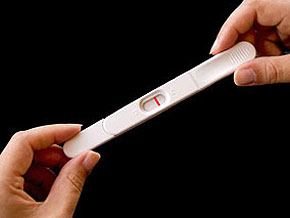What Causes Infertility?

Photo: © 2009 Jupiter Images Corporation
Having a baby may seem like a God-given right, but many couples struggle with infertility. It can take financial, emotional and physical tolls on them. Dr. Geoffrey Sher explains three causes of infertility and how modern medicine is helping many conceive.
As a physician involved in the treatment of infertility for more than 35 years, I am still in awe of those that choose to undergo often arduous fertility treatments. However, having children of my own and not being able to imagine life without them, I can fully understand the motivation that drives many couples to embark on a journey from infertility to family.What makes this journey so scary for most infertile couples is the fact that at the outset they usually have little or no knowledge regarding the road ahead, where it might take them, of possible detours along the way and of the financial, emotional and physical toll. Most are not even aware of the fact that there can be no guarantee that in the end they will reach their desired destination. Thus, it becomes the first responsibility of the fertility doctor and his team to empower such couples with all the required knowledge and then to provide quality care with professionalism, honesty, integrity and humility. I say humility because in the final analysis, no human being has the ultimate say in the creation of life.
Neither sex contributes more heavily than the other to infertility problems. Roughly one-third of all infertile couples can trace their infertility to the woman, one-third to the man and one-third to both partners.
Nowhere is the plight of the infertile couple more evident than in an ever-growing population of older women who, upon finding themselves unable to conceive by the time they reach their late 30s and early 40s, become desperate and often even panicked. Many such women have no other recourse than to go directly to in vitro fertilization (IVF).
For them, there is good news! There are major technical advances in the IVF arena: the emergence of sophisticated drugs and regimes by which to safely and effectively stimulate the ovaries to produce multiple healthy eggs, as well as the recent emergence of new genetic techniques to identify those embryos (fertilized eggs) that are most likely to develop into normal babies. And those for whom the fertility clock has run out of time, there is always the option of using an egg donor and still having a family.
I feel privileged to have been influential in the births of about 16,000 IVF babies, and in the process I hope to have left a small footprint in this relatively new and wonderful field of medicine.
What causes infertility?

These are the common causes of female infertility:
Damaged or Blocked Fallopian TubesThe most common cause of infertility in a woman is damaged or blocked fallopian tubes that prevent the egg and sperm from uniting. Sexually transmitted diseases such as chlamydia and gonorrhea are a major cause of tubal scarring and blockage. In addition, scar tissue that forms after pelvic surgery may also lead to fertility problems.
Endometriosis
Conditions such as endometriosis, in which the lining of the uterus grows outside the womb (causing scarring, pain and heavy bleeding), can also damage the fallopian tubes and ovaries. The presence of even a minimal amount of endometriosis in the pelvis is believed to adversely affect fertility by releasing toxic substances that might reduce the potential of the egg to be fertilized. The egg, of course, passes from the ovary through this environment to the fallopian tube, so while the presence of minimal endometriosis might not necessarily adversely affect the transportation mechanism, the egg's exposure to this toxic environment might diminish its ability to become fertilized. It has also been shown that even the mildest form of endometriosis releases "toxins" into the local; pelvic environment. This can damage the woman's eggs as they pass from the ovary with ovulation to the fallopian tube, where the sperm are waiting. Once exposed to such "toxins," the envelopment of the egg (zona pellucida) becomes resistant to fertilization. This explains why all women with endometriosis (regardless of its severity) have markedly reduced fertility potential.
Damaged Ovaries
Damaged ovaries may also contribute to infertility. Diseases such as pelvic inflammatory disease or endometriosis, as well as surgically induced scarring, may anchor the ovaries in an awkward position or form a barrier that prevents the finger like extremities of the fallopian tubes (fimbriae) from applying themselves properly to the ovaries' surface, thereby compromising their ability to "pick up" the egg at the time of ovulation. Although one or both fallopian tubes may be perfectly free and mobile, the corresponding ovary could be inaccessible and unmovable. In such cases, the egg or eggs would be ovulated into the abdominal cavity instead of being retrieved by the fimbriae.
Abnormal Ovulation
Abnormal ovulation is another common cause of female infertility. Some women do not ovulate at all, while others ovulate too early or too late in their cycle for a pregnancy to occur and survive. One of the reasons normal fertility usually wanes after 35 is because ovulation is more likely to become abnormal later in the childbearing years. In addition, it is believed that the quality of eggs decreases as women get older because the eggs' meiotic capacities are diminished by the aging process. The quality of the woman's eggs is one of the major determinants of whether a couple can get pregnant. A woman may also be infertile because disease, surgery or infection has damaged the lining of her uterus. Damage caused by scarring or the presence of tumors, such as fibroids, may prevent the embryo from attaching to the endometrium and developing properly.
Abnormal Uterus
Abnormalities in the size and shape of the uterus can also cause infertility problems. Sometimes women are born with an abnormally shaped uterus as a result of exposure to certain drugs their mothers took during pregnancy. A classic example of this disorder is the "T-shaped" uterus and significantly smaller uterine cavity often found in women whose mothers took diethylstilbestrol (DES) during pregnancy.
Hostile Cervical Mucus
Some women are unable to produce good quality mucus in the cervical canal (the entrance to the uterus). This mucus is necessary for vitalization of the pass through the cervical canal to reach the uterus and from there the outer part of the fallopian tube where fertilization takes palace. The production of hostile cervical mucus might be due to infection or due to antibodies or an allergic response to their partner's sperm. These antibodies may be passed into the cervical secretions and thereby prevent fertilization by destroying or immobilizing the sperm. Occasionally, surgery or injury to the cervix may have destroyed the glands that produce cervical secretions.

These are the common causes of male infertility:
Blocked Sperm DuctsThe causes of male infertility are often more difficult to define. Blockage of the sperm ducts is one obvious cause. Generalized blockage may be caused by sexually transmitted diseases. More easily identifiable blockage is caused by a vasectomy (voluntary surgery to occlude the sperm ducts for birth control purposes). While it is usually possible to surgically reconnect the tubes after vasectomy, some men, especially those who underwent the procedure more than 10 years earlier, remain infertile because in the interim their systems have developed an immune reaction that results in the production of antibodies that destroy or immobilize their own sperm.
Varicocele
Another common cause of male infertility is a varicocele, a collection of dilated veins around the testicles that hinders sperm function by increasing body temperature in the scrotum. In order for the testicles to produce healthy sperm, the temperature in the scrotum must be lower than it is in the rest of the body.
Abnormalities of the Testicles
Ideally, the testicles should have descended into the scrotum shortly after birth, but in some cases they do not reach the scrotum for years. In such circumstances, it may be necessary to accomplish this surgically when the man is very young to prevent the testicles from becoming severely damaged, thereby resulting in infertility. In rare cases, abnormal development of the testicles and/or sperm ducts may result from injury, disease or hereditary abnormalities.
Certain drugs or chemicals in the environment may also inhibit sperm production and function. And as in women, drugs such as DES can also produce abnormalities in the male offspring's reproductive system.
Hormonal Stimulation
Finally, for reasons that are often not readily apparent, some men lack the adequate hormonal stimulation that is required for proper sperm production.

For about 10 percent of all infertile couples, the cause of the infertility cannot be readily determined by conventional diagnostic procedures. Such cases are referred to as "unexplained infertility."
Modern IVF technology is making great strides in helping to identify some of the causes of so-called unexplained infertility. Improved testing techniques have made infertility easier to diagnose, and the majority of cases can now be diagnosed and generally are treatable.
Recent research has demonstrated that many women with unexplained infertility ultimately are found to have pelvic endometriosis that cannot yet be detected by direct vision during laparoscopy or surgery. For example, a condition called nonpigmented endometriosis, in which the endometrium may be growing inside the pelvic cavity with many of the same deleterious effects as overt endometriosis, cannot be detected by direct vision because no visible bleeding has occurred in these lesions. The fertility of these patients may be every bit as much compromised by these conditions as if they had detectable endometriosis.
Sometimes infertility is due to nonreceptivity of the uterine lining (endometrium) to the embryo (fertilized and divided egg). This can be due be the lining being too thin to accommodate the implanting root system of the embryo, scarring of the lining, infection or immunologic factors. The latter is fast becoming an important consideration, especially in cases of unexplained failure following the use of fertility drugs (with or without "artificial" insemination or IVF).
Dr. Geoffrey Sher is founder of Sher Institutes of Reproductive Medicine and has long been considered a pioneer in the science and business of reproductive medicine. He has assisted more than 25,000 women in the births of their babies after treating their infertility.
Keep reading: One woman's quest to conceive
Modern IVF technology is making great strides in helping to identify some of the causes of so-called unexplained infertility. Improved testing techniques have made infertility easier to diagnose, and the majority of cases can now be diagnosed and generally are treatable.
Recent research has demonstrated that many women with unexplained infertility ultimately are found to have pelvic endometriosis that cannot yet be detected by direct vision during laparoscopy or surgery. For example, a condition called nonpigmented endometriosis, in which the endometrium may be growing inside the pelvic cavity with many of the same deleterious effects as overt endometriosis, cannot be detected by direct vision because no visible bleeding has occurred in these lesions. The fertility of these patients may be every bit as much compromised by these conditions as if they had detectable endometriosis.
Sometimes infertility is due to nonreceptivity of the uterine lining (endometrium) to the embryo (fertilized and divided egg). This can be due be the lining being too thin to accommodate the implanting root system of the embryo, scarring of the lining, infection or immunologic factors. The latter is fast becoming an important consideration, especially in cases of unexplained failure following the use of fertility drugs (with or without "artificial" insemination or IVF).
Dr. Geoffrey Sher is founder of Sher Institutes of Reproductive Medicine and has long been considered a pioneer in the science and business of reproductive medicine. He has assisted more than 25,000 women in the births of their babies after treating their infertility.
Keep reading: One woman's quest to conceive
As a reminder, always consult your doctor for medical advice and treatment before starting any program.



